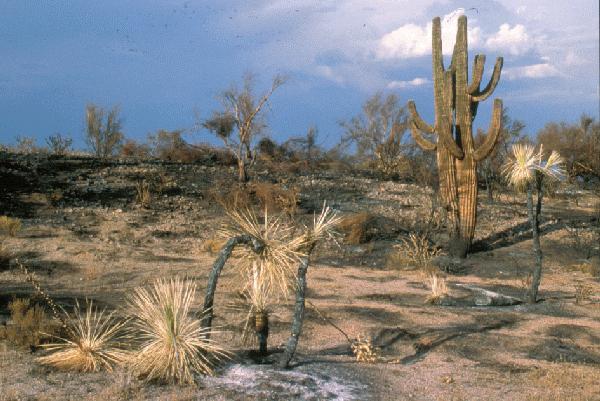- Home
- About S&T
- Taxa/Organisms
- Ecosystems
- Issues
- Methods & Tools
- Reports & Publications
- Location
- Search
Publisher: USGS | Science Center: Forest and Rangeland Ecosystem Science Center (FRESC, Corvallis) | Format: URL
fresc.usgs.gov — Description of a project to determine the status of reptiles and amphibians at Olympic National Park. Includes project objectives, metadata, related publications, and contact information.

Publisher: USGS | Science Center: Forest and Rangeland Ecosystem Science Center (FRESC, Corvallis) | Format: URL
fresc.usgs.gov — There is a relatively rich herpetofauna in southwestern Oregon with about 38 species present. These species are almost equally divided between amphibians and reptiles. The objective of this issue overview is to conduct field surveys and assess status of several amphibian species of management concern, including: Western toad (Bufo boreas), Cascade More...

Publisher: USGS | Format: URL
pubs.usgs.gov — The steps necessary to conduct a pitfall trapping survey for small terrestrial vertebrates are presented. Descriptions of the materials needed and the methods to build trapping equipment from raw materials are discussed. Recommended data collection techniques are given along with suggested data fields. Animal specimen processing procedures, More...

Publisher: USGS | Science Center: Western Ecological Research Center (WERC, Sacramento) | Format: URL
www.werc.usgs.gov — This site is a field guide to the reptiles and amphibians of coastal Southern California, including species accounts, illustrations of tadpoles, and images of different habitat types. The guide also contains a glossary of terms, a map of the study area, and types of habitats.

Publisher: USGS | Science Center: Patuxent Wildlife Research Center (PWRC, Laurel) | Format: URL
www.pwrc.usgs.gov — The Biological Survey Unit, formerly the Bureau of Biological Survey, played a major role in the collection of North American Birds housed at National Museum of Natural History (NMNH). This website gives a historical perspective of the history and organization of the collections and research of not only mammals, amphibians and reptiles curated by More...

Publisher: USGS | Science Center: Western Ecological Research Center (WERC, Sacramento) | Format: URL
www.werc.usgs.gov — This issues overview and its resources deal with the spread of nonnative grasses in the Sonoran desert of Arizona has increased the risk of devastating fires by ignited fuel. The saguaro cactuses and desert tortoises have suffered catastrophic population losses as a result of these fires fueled by nonnative grasses. Read more about nonnative More...

Publisher: USGS (San Diego Field Station) | Science Center: Western Ecological Research Center (WERC, Sacramento) | Format: URL
www.werc.usgs.gov — The Pacific iguanas of the Fijian and Tongan archipelagos are a biogeographic enigma in that their closest relatives are found only in the New World, separated by 8,000 km of ocean. The Pacific iguanas have been dramatically affected by human activities; two species were eaten to extinction after human arrival in the Pacific some 2,800 years ago. More...

Publisher: USGS | Science Center: Fort Collins Science Center (FORT, Ft. Collins) | Format: URL
www.fort.usgs.gov — This resource has been developed to provide source materials on the history of the invasion, continuing threats, research results, and containment and management of the brown Treesnake (Boiga irregularis) in Guam and its relevance to other islands and mild continental environments. Users can report snake sightings on this website, get information More...

Publisher: USGS | Science Center: Columbia Environmental Research Center (CERC, Columbia) | Format: .PDF
www.cerc.usgs.gov — Following the Kemp's Ridley on their perilous trek from Padre Island National Seashore, TX, where they are establishing a secondary nesting colony, to the Gulf of Mexico, is tricky business. Satellite transmitters are attached to a select number of females returning to the sea after laying eggs, their movements tracked by receivers picking up the More...

Publisher: NBII | Format: URL
www.nbii.gov — Natural resource managers face complex decisions that require a clear understanding of the status of wildlife populations and their habitats. Monitoring is key to making effective management decisions and evaluating the outcomes of those decisions. The goal of NRMP is to improve the accessibility of monitoring efforts to resource managers to aid More...

Publisher: USGS | Science Center: Fort Collins Science Center (FORT, Ft. Collins) | Format: URL
www.fort.usgs.gov — Natural Resource Monitoring Partnership (NRMP) is a collaborative effort by the natural resource management community to improve monitoring efforts in order to support effective evaluation and decision-making by sharing information on monitoring projects and protocols. The Natural Resource Monitoring Partnership was built for easy access to More...

Publisher: USGS | Science Center: Forest and Rangeland Ecosystem Science Center (FRESC, Corvallis) | Format: URL
fresc.usgs.gov — Description of a project to survey and monitor the western pond turtle, a species in Oregon's critical list. Includes statement of problem, objectives, methodology, related publications, and contact information.
